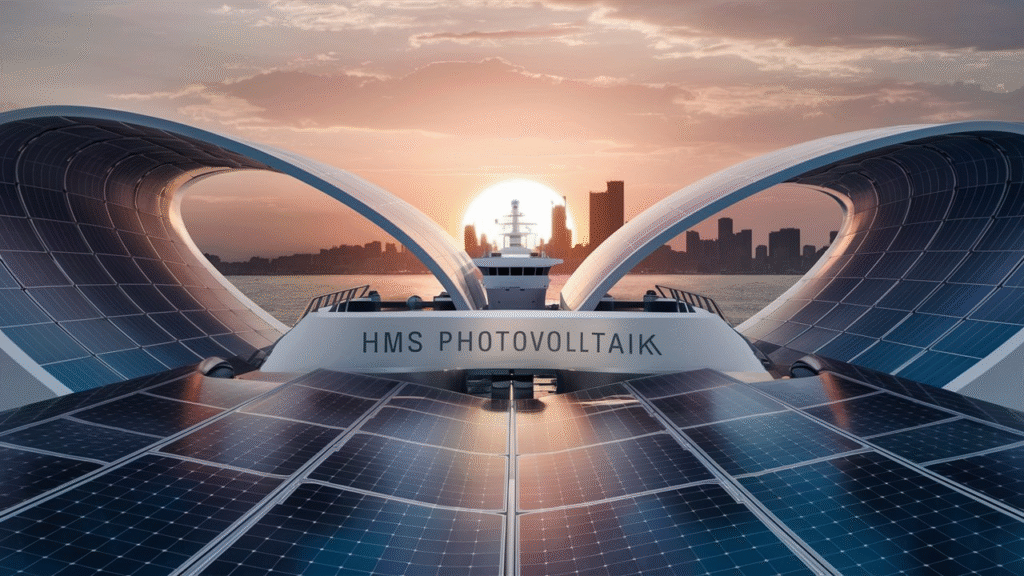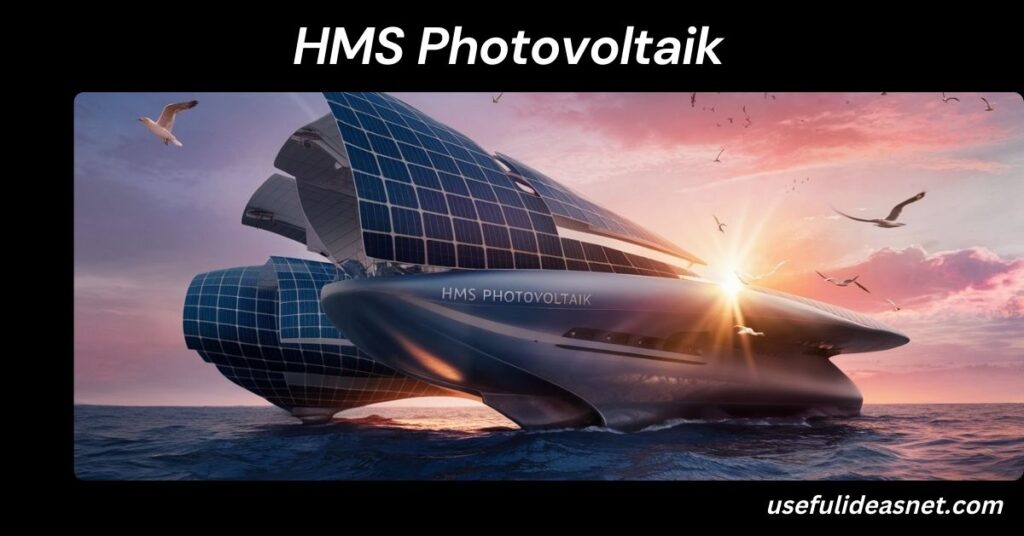In today’s world, where environmental concerns are at an all-time high, the demand for renewable energy solutions has surged. Among these, solar power, specifically HMS Photovoltaik, is becoming one of the most popular and viable alternatives to traditional energy sources. HMS Photovoltaik refers to a specialized branch of renewable energy systems focused on harnessing solar power using photovoltaic (PV) technology. This article will explore what HMS Photovoltaik is, how it works, its benefits, and why it is crucial for the future of energy production.
What is HMS Photovoltaik?
HMS Photovoltaik is a solar energy technology that uses photovoltaic cells to convert sunlight into electricity. The term “HMS” stands for a specific set of advanced photovoltaic systems that are designed to maximize energy efficiency and performance. These systems utilize high-quality solar panels and specialized technologies to ensure long-term, cost-effective energy generation.
Unlike traditional solar technologies, which are often inefficient or rely on outdated materials, HMS Photovoltaik integrates cutting-edge materials and technology for optimal performance. With an emphasis on sustainability and environmental impact, HMS Photovoltaik systems are built to last longer, produce more energy, and reduce carbon footprints.

How HMS Photovoltaik Works
At the core of every HMS Photovoltaik system is the photovoltaic (PV) cell. A PV cell is a semiconductor device that captures sunlight and converts it into electricity. When sunlight strikes the surface of a PV cell, it excites the electrons in the semiconductor material, causing them to move and generate an electric current. This current is then converted into usable electricity that can power homes, businesses, and even entire communities.
Also Read: Moodle Gettysburg: A Complete Guide for Students and Faculty
Key Components of HMS Photovoltaik Systems
- Photovoltaic Solar Panels: The most visible component of any solar system, these panels contain solar cells that convert sunlight into electricity. The quality of these panels is paramount in an HMS Photovoltaik system, as it directly affects the energy output.
- Inverters: The inverters are responsible for converting the direct current (DC) electricity produced by the solar panels into alternating current (AC) electricity, which is what most appliances and systems use.
- Battery Storage Systems: To maximize energy independence, many HMS Photovoltaik systems include battery storage solutions. These batteries store excess energy produced during the day for use at night or during cloudy weather.
- Mounting Systems: The mounting systems securely fix the solar panels in place, ensuring they capture the maximum amount of sunlight. These systems can be fixed to rooftops or installed as ground-mounted systems.
- Monitoring Systems: HMS Photovoltaik systems often come with monitoring tools that track energy production and system performance. These tools allow homeowners and businesses to ensure their system is working at peak efficiency.
Benefits of HMS Photovoltaik
HMS Photovoltaik is rapidly gaining popularity due to its many advantages. Here are some of the key benefits that make it an attractive option for both residential and commercial energy solutions:
1. Sustainability and Environmental Impact
HMS Photovoltaik systems help reduce the carbon footprint by generating clean, renewable energy from sunlight. As one of the most eco-friendly energy sources, solar power is key to combating climate change and minimizing the use of fossil fuels.
2. Cost Savings and Energy Independence
One of the most significant advantages of HMS Photovoltaik is its ability to reduce energy costs. By harnessing solar energy, homeowners and businesses can cut down on their utility bills and avoid the volatility of electricity prices. In the long term, these systems can lead to substantial savings, with some systems paying for themselves within 5-10 years.
3. Low Maintenance and Longevity
HMS Photovoltaik systems are designed to be durable and low-maintenance. Once installed, they require minimal upkeep. Solar panels typically last 25-30 years, with warranties that often exceed 20 years, ensuring reliable performance for decades.
4. Energy Efficiency
HMS Photovoltaik systems are designed for optimal efficiency. By using advanced technology and high-quality materials, these systems can convert more sunlight into electricity than traditional solar panels. This ensures that users get the maximum energy output with the least amount of waste.
5. Incentives and Rebates
In many countries, including the United States, there are government incentives and rebates for individuals and businesses that install solar power systems. These incentives can reduce the initial cost of installation, making solar power an even more attractive investment.
Also Read: TotallyNDFW: A Complete Guide to the New Era of Digital Content
Applications of HMS Photovoltaik
HMS Photovoltaik systems are not limited to residential use; they can be applied in various sectors. Some common applications include:
1. Residential Solar Power
Homeowners can benefit from HMS Photovoltaik by installing solar panels on their rooftops. These systems provide a sustainable energy source that can reduce electricity bills and offer energy independence.
2. Commercial and Industrial Use
Businesses can also benefit from the installation of HMS Photovoltaik systems. Commercial installations can range from rooftop solar panels on office buildings to large-scale solar farms that power entire factories. By investing in solar, businesses can reduce operational costs and increase sustainability.
3. Community Solar Programs
Community solar programs allow multiple households or businesses to share a single solar array. This is particularly beneficial for those who cannot install solar panels on their own property, such as renters or people with shaded rooftops.
4. Off-Grid Solutions
HMS Photovoltaik systems are ideal for off-grid locations, such as remote cabins, rural homes, or islands. These systems can provide reliable electricity in areas where the grid is unavailable, offering a sustainable and cost-effective energy solution.
HMS Photovoltaik vs. Traditional Solar Technology
HMS Photovoltaik stands out from traditional solar technology due to several factors. The key differences include:
- Efficiency: HMS Photovoltaik systems are typically more efficient than traditional solar panels, meaning they can generate more electricity in less space.
- Materials: The materials used in HMS Photovoltaik systems are often more advanced, providing longer lifespans and better performance.
- Integration with Modern Technologies: HMS Photovoltaik systems are often designed to integrate seamlessly with smart home technologies, allowing users to monitor and control their energy usage through mobile apps and other platforms.
Challenges and Considerations
While HMS Photovoltaik offers many benefits, there are also challenges to consider:
- Initial Investment: The upfront cost of installing an HMS Photovoltaik system can be high. However, this cost is offset over time through energy savings and potential government incentives.
- Location and Sunlight Availability: The efficiency of a solar system depends on the amount of sunlight available in the location where it is installed. Areas with less sunlight may require larger systems to produce the same amount of energy.
- Weather Dependence: Solar power generation can be affected by weather conditions, such as clouds and rain. However, this can be mitigated with battery storage systems that store excess energy for use during cloudy or nighttime periods.
Future of HMS Photovoltaik
As technology continues to evolve, the future of HMS Photovoltaik looks promising. Key trends to watch for include:
- Improved Efficiency: Ongoing research into new materials and technologies is expected to improve the efficiency of photovoltaic cells even further.
- Solar + Storage: The integration of solar power with advanced battery storage systems will provide even more energy independence, allowing homeowners and businesses to rely entirely on solar energy.
- Smart Solar Systems: With the rise of smart homes and IoT (Internet of Things), HMS Photovoltaik systems will become more integrated with home automation systems, making it easier to manage energy use.
Also Read: odysseystoryshop.com : A Complete Guide for Solo and Budget Travelers
Frequently Asked Questions (FAQs)
What is the lifespan of an HMS Photovoltaik system?
The lifespan of an HMS Photovoltaik system typically ranges between 25 to 30 years, depending on the quality of the components used and the maintenance of the system.
Can I install HMS Photovoltaik if I live in a cloudy region?
Yes, HMS Photovoltaik can still work in cloudy regions, but the efficiency may be lower compared to sunnier areas. Battery storage can help store excess energy during sunny days for use on cloudy days.
Are there government incentives for installing HMS Photovoltaik systems in the United States?
Yes, there are several incentives available for installing solar systems in the U.S., including tax credits, rebates, and grants. These can significantly reduce the initial cost of installation.
Can HMS Photovoltaik systems work off-grid?
Yes, HMS Photovoltaik systems are ideal for off-grid applications, especially when combined with battery storage systems to store excess energy for use when there is no sunlight.
How do HMS Photovoltaik systems reduce my electricity bills?
HMS Photovoltaik systems generate electricity from sunlight, reducing the amount of electricity you need to purchase from your utility provider. The more solar energy you produce, the less you need to rely on the grid.
Conclusion
HMS Photovoltaik represents a significant leap forward in solar energy technology. By offering high efficiency, sustainability, and long-term cost savings, it is set to play a crucial role in the global transition to renewable energy. As the world continues to seek cleaner, more efficient energy solutions, HMS Photovoltaik stands out as a powerful tool in shaping a greener future. Whether you are a homeowner, business owner, or part of a community solar program, investing in HMS Photovoltaik is an investment in the future of energy.
